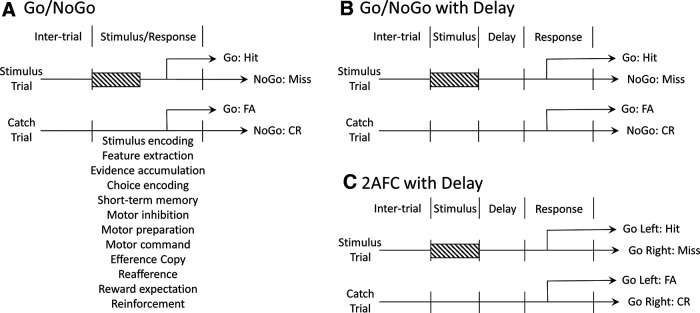Figure 1.
Behavioral task design and associated internal processes. A, Standard Go/NoGo task structure. After the intertrial interval, one of two trials are presented: stimulus present (stimulus trial) or stimulus absent (catch trial). Within this design, stimulus presentation and response windows overlap. Beneath this combined stimulus–response window, we indicate some of the internal processes likely to be deployed. Trial outcomes include response present (Go) and response absent (NoGo). Hit: Stimulus/Go; Miss: Stimulus/NoGo; False alarm (FA): Catch/Go; Correct rejection (CR): Catch/NoGo. B, Same Go/NoGo trial structure as in A, but with the inclusion of a delay between stimulus and response windows. This affords a separation of sensory and decision-making processes during the stimulus window from the task-instructed motor processes and reinforcement signaling during the response window. C, 2AFC trial structure. The same trial types are presented as in A and B, yet subjects are required to report both stimulus present and stimulus absent with different motor actions (e.g., Go Left, Go Right). This trial structure affords a separation between choice encoding (deciding stimulus present vs absent) and generalized motor initiation. How the processes listed in A distribute across task epochs in B and C will depend on the precise details of each task and should be considered for all task designs.

